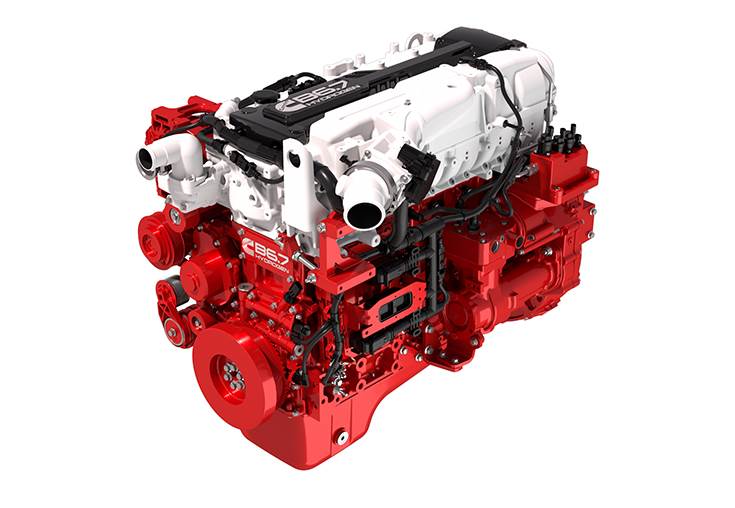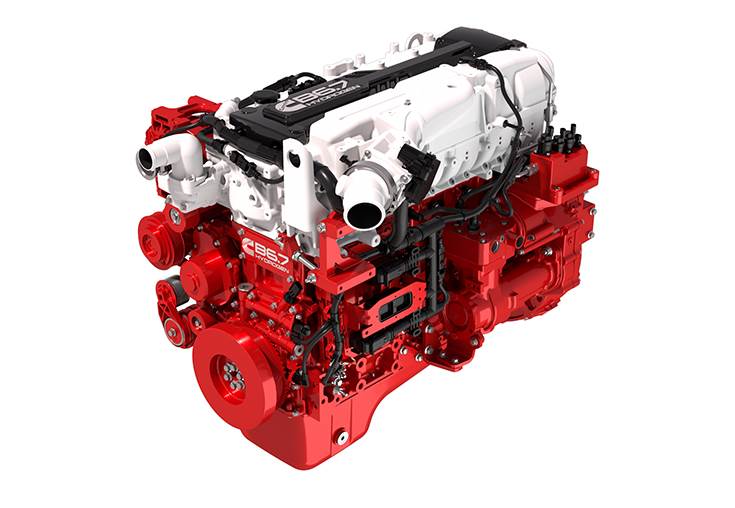Global power solutions and hydrogen technologies provider Cummins Inc has signed an MoU with Tata Motors, commercial vehicle market leader in India, to collaborate on the design and development of low and zero-emission propulsion technology solutions for commercial vehicles in India. These include hydrogen-powered internal combustion engines, fuel cells, and battery electric vehicle systems.
The MoU was signed in the presence of N Chandrasekaran, Executive Chairman, Tata Sons, and Tom Linebarger, Executive Chairman, Cummins Inc today at the Tata Sons Headquarters – Bombay House, in Mumbai, India. Senior officials and dignitaries from Cummins India and Tata Motors were also present during the MoU signing ceremony.
N Chandrasekaran, Executive Chairman, Tata Sons and Chairman, Tata Motors said, “The shift to sustainable mobility is irreversible and Tata Motors is committed to be amongst the leaders of green mobility. We are taking definitive steps to drive this global megatrend forward in each of our businesses. Working with partners who share the same vision is essential for this transition and we are delighted to strengthen our long-standing relationship with Cummins for their next generation, hydrogen propulsion systems. We are excited to indigenise the cutting-edge hydrogen technology to offer our customers an expanded portfolio of green and future-ready commercial vehicles, accelerate the adoption of sustainable mobility in the country, and to contribute towards India’s ‘net zero’ carbon emission goals.”
Commenting on the strategic collaboration, Tom Linebarger, Executive Chairman, Cummins Inc., said, “Climate change is the existential crisis of our time, and this collaboration between Cummins and Tata Motors accelerates our ability to address it. Cummins is well-positioned to help our customers successfully and seamlessly transition to economically viable decarbonised solutions. Cummins and Tata Motors have a strong history of partnership, and the next step into low and zero-emissions technologies is an exciting development for zero-emissions transportation. Our collaboration in India is an important milestone for Cummins and Tata as we work together to accelerate the shift to a carbon-free economy and a zero-emissions world. We strongly believe that this collaboration is a significant step forward to achieving India’s Green Hydrogen Mission. I am excited to enable powering a cleaner and greener India.”
Cummins B6.7H hydrogen engine
India will be one of the first markets to receive Cummins’ hydrogen engines, an important technology to help drive decarbonisation.
The Cummins B6.7H hydrogen engine with up to 290 hp (216 kW) output and 1200 Nm peak torque is an all-new engine platform featuring cutting-edge technology to enhance power density, reduce friction losses and improve thermal efficiency.

Cummins had showcased its B6.7H hydrogen internal combustion engine (H2-ICE) at IAA Transportation in September. The H2-ICE conversion highlights the opportunity for truck applications across the 10-to-26 tonne GVW range to operate on zero-carbon hydrogen fuel with a potential operating range of up to 500 kilometres.
Cummins says engine performance is compatible with the same transmissions, drivelines, and cooling packages. The B6.7H hydrogen engine is derived from Cummins fuel-agnostic platform offering the benefit of a common-base architecture and low-to-zero carbon fuel capability.
Cummins had recently displayed this engine at IAA Transportation trade fair in Hanover in September.
Cummins zero-emission product portfolio also includes its fourth-generation hydrogen fuel cell engine. Designed to meet the duty-cycle, performance and packaging requirements of medium and heavy-duty trucks and buses, the fuel cell technology is available in 135 kW single- and 270-kW dual modules. The systems have strong operating cycle efficiency and durability for a lower total cost of ownership. Cummins battery portfolio includes both Lithium Iron Phosphate (LFP) and Nickel Manganese Cobalt (NMC) battery packs, each of which targets a different duty cycle and use case.
